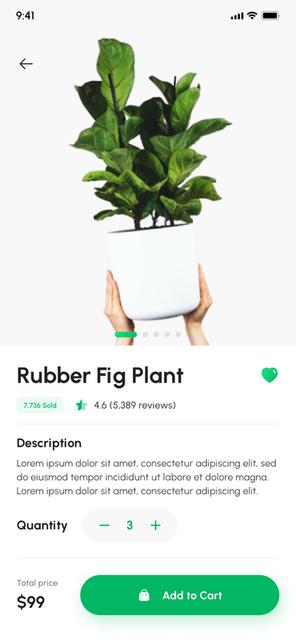UX/UIDecoded:DemystifyingtheSecretsBehind CaptivatingUserExperiences!









Introduction:

erface (UI) design have become critical and successful digital experiences. s behind creating such experiences can puzzle. In this guide, we will demystify unveiling the principles and strategies riences. By the end, you will have the gns that leave a lasting impact on your users.

1. User-Centric Design: Putting Users at the Heart of Your Design Process

2. Usability: Creating Intuitive and Effortless Interactions
3. Visual Design: Balancing Aesthetics and Functionality


4. Consistency: Establishing Trust and Familiarity

5. Clear Information Architecture: Making Content Discoverable

6. Microinteractions: Adding Delightful Moments


7. Mobile Optimization: Designing for On-The-Go Users
8. Accessibility: Designing for Inclusivity

1.User-CentricDesign:Putting UsersattheHeartofYourDesign Process
User-centric design is the foundation of captivating user experiences. It involves understanding your target audience, their needs, goals, and pain points. Conduct user research, surveys, and interviews to gain insights into user preferences and behaviors. By empathizing with your users, you can design experiences that address their specific needs and provide meaningful solutions.

2.Usability:CreatingIntuitiveand EffortlessInteractions
Usability is a key element of UX/UI design. Ensure your design is intuitive and easy to navigate. Use clear labels, logical information hierarchy, and intuitive interaction patterns. Simplify complex processes and minimize cognitive load. By creating effortless interactions, you enhance the usability of your design and provide a seamless experience for your users.

3.VisualDesign:Balancing AestheticsandFunctionality
Visual design plays a crucial role in captivating user experiences. Create a visually appealing interface that aligns with your brand identity. Use color, typography, and imagery strategically to guide attention and evoke desired emotions. However, remember to balance aesthetics with functionality. Prioritize legibility, readability, and clarity of information. By striking the right balance between aesthetics and functionality, you create visually captivating designs that also serve their purpose effectively.

4.Consistency:EstablishingTrust andFamiliarity
Consistency is key in UX/UI design. Establish a consistent visual language throughout your design. Use consistent colors, typography, icons, and interaction patterns. Consistency fosters familiarity and builds trust with your users. When elements behave predictably and consistently, users feel more comfortable and confident in using your interface.

5.ClearInformationArchitecture: MakingContentDiscoverable
Information architecture is the organization and structure of content within your design. Create a clear and logical hierarchy that enables users to find information effortlessly. Categorize content into meaningful sections and use intuitive navigation patterns. Employ search functionality to help users find specific content. By making your content discoverable, you empower users to explore and engage with your design more effectively.

6.Microinteractions:Adding DelightfulMoments
Microinteractions are small, subtle animations or feedback that add a touch of delight to user interactions. They can be as simple as a button animation or a notification sound. By adding microinteractions, you create delightful moments that engage users and make their experience more enjoyable. However, ensure that microinteractions enhance the usability and don’t become distractions.

7.MobileOptimization:Designing forOn-The-GoUsers
In the mobile-centric world we live in, optimizing your design for mobile devices is crucial. Use responsive design techniques to ensure your design adapts seamlessly to different screen sizes. Optimize touch interactions and prioritize content based on mobile user needs. By designing for mobile, you cater to the growing number of onthe-go users and provide a consistent experience across devices.

8.Accessibility:Designingfor Inclusivity

Inclusivity is an essential aspect of UX/UI design. Ensure your design is accessible to users with disabilities. Follow accessibility guidelines to make your design usable for everyone, regardless of their abilities. Provide alternatives for visual content, use appropriate color contrasts, and optimize for assistive technologies.
By designing for inclusivity, you create an experience that is accessible and inclusive for all users.
CONCLUSION
Captivatinguserexperiencesarenotachievedbychancebutthroughintentionaldesign decisions.Byadoptingauser-centricapproach,focusingonusability,andbalancing aestheticswithfunctionality,youcancreatedesignsthatcaptivateandengageyourusers.
Consistency,clearinformationarchitecture,microinteractions,andmobileoptimization furtherenhancetheuserexperience.Lastly,designingforinclusivityensuresthatyourdesign isaccessibletoallusers.BydemystifyingthesecretsbehindUX/UIdesignandapplyingthese principles,youunlockthepowertocreatecaptivatinguserexperiencesthatleavealasting impression.











devoqdesign.com NEED MORE INFO ? CONTACT US sales@devoqdesign.com +919998811943 111,PlatinumPlazaOpp. I.O.C.petrolpump, Bodakdev,Ahmedabad380054 CONTACT US Presentationsarecommunicationtoolsthatcan beusedasdemonstrations,lectures,speeches, reports,andmore.
THANKS FOR WATCHING








































